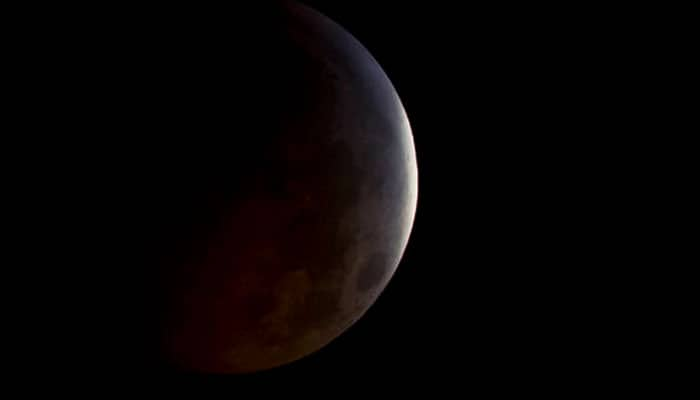Washington: For the first time in over 30 years, people will be able to will see a rare celestial event this month– a supermoon in combination with a lunar eclipse.
On the night of September 27, 2015, a total lunar eclipse will mask the moon’s larger-than-life face for more than an hour.
The total eclipse will last one hour and 12 minutes, and will be visible to North and South America, Europe, Africa, and parts of West Asia and the eastern Pacific, said NASA.
Also read: Incredible picture of Sunflower Galaxy from Hubble
Viewers can see the supermoon unmasked after nightfall. Earth’s shadow will begin to dim the supermoon slightly beginning at 8:11 p.m. EDT. A noticeable shadow will begin to fall on the moon at 9:07 p.m., and the total eclipse will start at 10:11 p.m.
“Because the orbit of the moon is not a perfect circle, the moon is sometimes closer to the Earth than at other times during its orbit,” said NASA's Noah Petro, deputy project scientist for the Lunar Reconnaissance Orbite
“When the moon is farthest away it’s known as apogee, and when it’s closest it’s known as perigee. On September 27, we’re going to have a perigee full moon - the closest full moon of the year.”
At perigee, the moon is about 31,000 miles closer to Earth than at apogee. During perigee, a full moon appears about 14 percent larger and 30 percent brighter in the sky than during apogee full moon, which sparked the term “supermoon.”
During a lunar eclipse, the Earth's shadow will cover the moon for more than an hour as the planet comes between the sun and the moon.
As for the supermoon and a lunar eclipse occuring on the same day, Petro said that it’s just planetary dynamics and all these things just falls into place every once in a while.
But the proverbial stars only align for this event once every few decades, making this phenomenon much rarer than a supermoon or a lunar eclipse separately.
The last supermoon/lunar eclipse combination occurred in 1982 and the next won’t happen until 2033. “That’s rare because it’s something an entire generation may not have seen,” said Petro.
So, don't forget to tune in on September 27 for this rare event, taking place right in Earth’s neighborhood.
(Source: NASA)
















